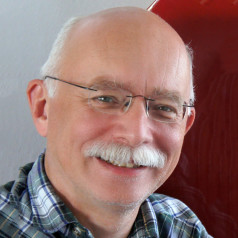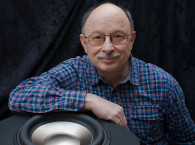
I visited Hypex several times, including in 2017 when I wrote about the company in one of my Amplifier Series articles for audioXpress. Recently I returned to the company’s headquarters to catch up on all the latest developments, some of which are being anticipated in the company’s OEM product catalog online [1]. In its facilities in Groningen, Netherlands, Hypex Electronics keeps its R&D, planning, sales, support, and a small warehouse. All Hypex production is mainly done in its own production facility in Malaysia, and the company’s largest warehouse is in Hong Kong, from where products ship to most customers.
In my 2017 report, I revisited the company’s history starting with its foundation in 1996 by the late Jan-Peter van Amerongen, the company’s earlier products using technology from Philips, and the groundbreaking collaboration with Bruno Putzeys, leading to the migration to “Universal class-D” (UcD) modules. The introduction at that time of the UcD180, an OEM module of unprecedented quality and efficiency, meant that there was an affordable high-quality alternative that changed the traditional audio amplifier market. The subsequent introduction in 2008 of the new world-class NCore technology propelled the company as a global supplier of amplification modules and power supplies to many big name audio brands. The title of my original article about Hypex was “Class-D High-Fidelity,” and that still defines how the company’s products are regarded today in the audio industry.
A lot has happened since then. In 2021, Jan-Willem Winters, who had been leading the company’s R&D efforts for the previous five years, and worked at the company since 2010, was appointed as the new CEO. And since then, Hypex has not stopped introducing new products, expanding its catalog with new solutions, and expanding its market increasingly also toward higher power Class-D and multichannel solutions for professional audio markets.
In 2022, Hypex announced its latest NCOREx technology and launched the NCOREx family of OEM modules with much improved performance. Shortly after, it launched Nilai, a new Class-D amplifier series, and caused serious excitement in the DIY community with the launch of a completely new amplifier module, the Nilai500DIY. Hypex took its existing control-loop topology to a whole new level resulting in an immense performance upgrade compared to its existing designs and promising massive performance improvements, including in distortion figures, power supply noise rejection, and reduced output impedance.
As we were welcomed by Jan-Willem Winters at multiple trade shows, where he introduced us to these new products and all the exciting things happening at this company, we felt that the time was due for an interview.

Ward Maas: Jan-Willem, can you tell us a bit about yourself and how you started working at Hypex?
Jan-Willem Winters: Well, I was born and raised in the Netherlands. From an early age I was fascinated by everything that had to do with sound. Always working with sound, taking apart equipment to see how it worked and if I could fix it. From the age of 14 I worked as a roadie at a sound rental company that worked mainly for top artists in the Benelux. The live experience, the hustle and bustle, solving mistakes under pressure, the crazy work hours… It was a fantastic time, and I learned a lot about sound. As a drummer, I also got to record my own drum solos.
Eventually I started studying HBO electrical engineering in Zwolle. During an internship I worked for JK Acoustics, Johan Ketelaar’s company. There I learned a lot about analog technology. At some point the question arose as to what kind of graduation project I wanted to do. Audio was of course the obvious choice. I knew Hypex from the DIY forums as a company that was very interesting for DIY-ers. So I took the plunge and sent a letter to Hypex. There was indeed room for me there. They took me on as a graduate student on the six-channel DLCP (Digital Loudspeaker Controller Platform).
I had a general electrical engineering background, of course, and used the knowledge to work on that DLCP project. Although it was fairly early days for DSP use and a new product for Hypex, fortunately it was not completely unexplored territory for them. This product had to be the best of the best in terms of both hardware and software. And DSP software in particular is a separate world. It does involve some special math. Especially in these early days, this was also fairly unknown territory within an electrical education. With the help of people with the right knowledge, we managed to make this project a success. They helped me a lot. After that graduation project, I was invited to start working at Hypex immediately.
And then it really started. I had experience with print layout design, but that combination of analog techniques and digital made it a challenge. At Hypex, I really learned how to do it. And certainly, that mix of analog and digital shouldn’t bite each other. It remains an open door, of course, but Class-D is also “just” analog technology.


WM: How was Hypex when you joined?
JWW: Hypex was originally a small company that designed and sold conventional plate amplifiers, Class-H amplifiers, that sort of thing. Then Jan-Peter van Amerongen arrived with the first Class-D amplifier as developed by Bruno Putzeys at Philips. Then, the first designs were still made by Jan-Peter with remote help from Bruno. Jan-Peter understood how great it was, and wondered why Philips didn’t do anything with it. But Philips didn’t continue with Class-D and then Bruno joined Hypex.
The semiconductor branch of Philips continued with Class-D for a bit longer. Jeroen Langevoort, who was still in charge there, would later start Axign. The Axign chip designs put a high-speed feedback loop around a Class-D amplifier, further improving performance. Eventually Axign, under Jeroen’s leadership, worked with Hypex again in a collaborative project.
That Class-D amplifier project accelerated everything at Hypex. Due to its success, it soon became apparent that local assembly in Groningen was not sufficient. At first a company in Slovakia was found, and later in China (Hansong Technology), and now in Malaysia. At that time, with a list of names he received through his network, Jan-Peter simply visited potential companies that could have a role. And so, the first UcD180 and UcD400 modules were produced. Obviously, a challenge to rig up and control a production from a distance.
That was not an easy task. You need to have a good assembly manual, you have to define production methods. You have to specify exactly what quality requirements your product has to meet. How do you organize the logistics? In short, you have to think of everything. Fortunately, the quality level at Hansong, China was already good. They made the products for us and for their ODM customers. Those products were not extremely complicated. You also grow into that, you stumble once, fix it, and make sure it doesn’t happen again. Once it runs, there are really no problems to be expected. The main thing is that the design of your products is right. That the tolerances are right. Otherwise, you get varying quality, and you don’t want that. Of course you have to visit often. After all, your name is on it.

WM: What was your role in development when you joined Hypex?
JWW: The main thing was custom development with digital signal processing, amplifiers or a combination thereof. A lot of hifi, but also pro audio. A very diverse package. You get requests from companies for assembly-ready products. You solve a customer’s problem. That requires intensive consultation. What is necessary? What is that product going to look like for that customer? That could be partial projects or the development of a completely new product from scratch.
I was in R&D for about seven years and eventually became team lead R&D. I did that for five years and then the news came that Jan-Peter was sick. He was actually in the process of slowly winding down, letting go a bit more and retiring. Unfortunately, that didn’t happen. Jan-Peter asked me to take over his duties. And I stayed in that position. Fortunately, we have a close-knit team. People with a passion for audio. A team that stands as a house and that’s very nice.
WM: Bruno Putzeys said that his calculations for UcD almost matched reality. As for NCORE, they were completely correct. How do you improve on that?
JWW: You try to make the best possible model of a Class-D amplifier. Of course, we continued to try to perfect the NCORE model. We have some people at Hypex who are very good at that.
With math, you can just calculate the behavior just like any other amplifier. You do have to take into account the specific Class-D issues. For example, are the oscillation criteria for a square wave and a sine wave the same? Class-D has really come of age in terms of performance. The principles have actually been known since the 1930s. Class-D is not a young product.
Only now do we have the technology and the knowledge to make it very good and design very efficient amplifiers with extremely low distortion. The work that Hypex has done here is groundbreaking. When you see the latest Class-A amplifiers being introduced at trade shows, they get so hot that they are on the edge of what is allowed. There’s really no need to do that anymore. The efficiency of Class-D is so good, embrace it.
WM: But what about those who say they don’t like the sound of Class-D?
JWW: That’s taste, for sure. Hypex goes for neutrality, that doesn’t necessarily appeal to everyone. These last years however we are more and more involved in researching what influences that sound. We measure and optimize until it’s perfectly good and then we start listening. Do we want this result? Or should we adjust it some more? The distortion you measure is extremely low. How many zeros after the decimal point do you want? And yet we still hear differences. Therein lies the challenge.
We see, for example, that the electrolytics you use affect the sound.

WM: Is that in the power supply or also in the amplifier?
JWW: Both. In the power supply and in the amplifier. But also, on the primary side of the (switch mode) power supply. That’s quite a bit elusive in a measurement. That questions your measurements, of course. You don’t want coincidences, you want to know the underlying reason, what mechanism lies beneath it? When we test with a listening panel according to ABX method and consistently better results come out of it, we can’t ignore that.
As an engineer, it is actually very annoying when we can’t properly track down why it sounds that way. But with the experience we now have, we can offer customers a more custom solution. To approximate the “sound” of a customer.
WM: You indicated that low idle current is becoming increasingly important.
JWW: In Class-D we have that takeover point where you just may not have both power FETs “open.” The more precisely you can do that, the more efficient you become. The more control you have over that, the more you can play with it. Then you can optimize it. But it’s not only there that we can gain efficiency. There used to be a fixed setting for the quiescent current, now it’s variable depending on the power demanded. Actually, an amplifier is idle 80% of the time. During that time, you want to develop as little heat as possible. We have now done that with NCOREx. With the NCOREx upgrade on NCORE we have an even lower idle current. We are now 20%-25% better in that respect. With the comparator and modulator, you can influence that behavior.
WM: There seems to be a lot happening in that regard. Also, in terms of new chips for Class-D and quite a few new technologies.
JWW: In terms of efficiency, we keep a close eye on the market. One such new development is GaN. That wasn’t a big deal a few years ago in terms of cost versus performance. But now we are working on GaN products, to see what it means for us. Everything we do has to add value for us and should not be considered a marketing ploy. It’s a hype right now, but it does have to add technical value.

WM: There is also a distortion numbers race right now, as you pointed out. How many zeros do you want to have after the decimal point? What does this mean for Hypex?
JWW: It takes more and more feedback to get those low numbers. And eventually you get the question of how far do you want to go to add another zero. Maybe this is important for a single customer, but in the end we still have to decide with our ears.
For the NCOREx update, the NCORE mathematical model had to be redone, which fortunately went quite fast. But there we are indeed talking about complex feedback loops. For Nilai, also a NCOREx update, given the required cost and lower complexity, we also had to work out a completely new control loop. In the end, all that work resulted in many steps gained in sound quality.
When we go back to the calculations, we see there is still something more to be gained. The challenge, of course, is to get the whole behavior under control. That mathematical model is not standing still. We continue to search for innovative products. To find out what we can further develop for that optimal sound quality.
WM: Do you have to laser trim due to that precise model?
JWW: No, that’s not an issue. Using lower tolerance components is sufficient. In production you don’t want to adjust. If it can be done right the first time it has its advantages. So laser trimming is not necessary. The tolerance of the components used is acceptable. We test everything out on self-developed test systems. All data is logged, analyzed, and discussed. You can tell immediately if something is out of sync. Each product has its own unique set of measurement data.
WM: Let’s talk about Nilai. Why a different product for DIY? Hypex has a history there, but why do you maintain that?
JWW: With Nilai technology, we created a DIY product in which we don’t have to skimp on components, so we manage to achieve the best sound. Nilai is proof of what we can achieve with Class-D.
We feel we not only have a heritage there, but we gain a lot of knowledge from that. Not many companies do this. And furthermore, it’s a fun market. The OEM and DIY market don’t bite each other. We also have OEM customers that came to us from the DIY market. They build something to use at home and gain inspiration after finding out how good it is. They didn’t know this quality was possible.
We are currently seeing a lot of interest in the nx500 from people who are also comparing it to the nc500 because of the development of NCOREx. We have made another big leap there in terms of audio performance and idle current. The same is true for Nilai. We are looking at further integration into OEM products with NCx. We expect efficiency to become more and more important.
And Class-D usage for multichannel products is ideal. There is no reason to use less efficient techniques for that.
I think there is a clear awareness of efficiency and sustainability in the industry. And sustainability is also a theme that our suppliers are going along with.

WM: But is that also true in high-end audio?
JWW: We actually don’t do anything else even in high end! I would like to convince people that this works very well. Rules of the past in this regard no longer apply. Just listen without prejudice. A good switch-mode power supply (SMPS) — not all are suitable — recovers faster from an overload situation. A blind comparison test between a linear versus a switch-mode power supply shows that an SMPS is better. Not every SMPS does, the design is critical. EMI, of course, is one thing. In a Nilai, with the new power supply with PFC (power factor correction), EMI is no problem at all.
WM: I saw an EMI test area here in Groningen during the tour. How do you guys use it?
JWW: Because of the nature of Class-D amplifiers, we have long recognized the importance of EMI. We have a lot of experience with it. So it was not surprising that customers came to us with questions about EMI. Many customers have questions about how EMI compliant their final product will be. So, it was obvious that we would extend our service to our OEM customers to include help in this area.
In Groningen, pre-compliance tests can be carried out so that our customers know where they stand and are not surprised when their own designs are combined with Hypex products. They can fall back on Hypex throughout the certification process.
WM: Are those products using Hypex technologies also changing with market trends?
JWW: What we also see is that young people in particular “consume” audio differently. Streaming is becoming more and more important.
An NC52P is a 2x 50W smaller amplifier that is easy to implement in streaming products. We have a number of customers who are already doing that. The “super high end” is the somewhat “older” target group but we do see that due to high quality streaming services and headphones, there is more interest in this.
We have more and more ideas about how we can influence sound, so we can combine the advantages of Class-D with the desired tonal character. And we are continuously studying the mechanisms for that. For example, we have an intern focusing on what measurements we can come up with to understand intangible sound differences.

WM: That sounds like a really fun internship!
JWW: We have made a commitment to train the next generation. Our interns come from everywhere and the good ones are eager to travel to gain that experience. Interns with the right mentality go the extra mile. For example, they stay a little longer because they want to figure something out. That is highly appreciated. Intrinsic motivation is everything within the team. That’s why the entire Hypex team ended up attending the trade show in Munich.
For everyone, this is a combination of a company outing and contact with customers and the market.
WM: And how is Hypex managing production?
JWW: After having the experience of manufacturing in China, we established a joint venture in Malaysia in 2014. US import tariffs on products produced in China bother us. Malaysia is a stable country and does not have those problems. Furthermore, traveling to Malaysia is easier for us. We have Dutch management there. We have full control of the factory. We are able to increase production. We also have our own Hypex test systems there. With today’s digital communication systems working well, managing that got easier.
WM: That move paid off in recent years I assume?
JWW: Sure. We had a pandemic, parts shortages, and the infamous AKM fire. That created quite a few challenges. Fortunately, we were able to move quickly and stockpile. As a result, we were able to continue to deliver. We did have to hold off some new customers to service the existing ones. Fortunately, we made the right choices.
One of the advantages of our amplifiers is that they use discrete components and few ICs. As far as the amplifiers are concerned, no redesigns were necessary. As for the DSP products, of course, they did. The AKM fire came at the wrong time. Unfortunately, there were too many chip brokers who made the situation worse. We prefer to speak directly with the manufacturers.
We had daily consultations with the factory. We have a purchasing team in Malaysia as well as here in Groningen. The time difference suddenly gave us an advantage, allowing both teams to work continuously on that problem, and we arrived at a good result together.

Looking Ahead
The Hypex product range seems to be growing. The new 2024 Hypex OEM product guide is currently more than 100 pages long. Hypex has grown from a supplier with a few groundbreaking products to a leading specialist supplier, designer and manufacturer of Class-D power amplifiers, power supplies, DSP solutions and plate amplifiers for the hifi, high-end and pro audio industries.
The Hypex amplifier portfolio covers a wide range of applications. What is less obvious is the availability of switch-mode power supplies up to 3000W, specifically for audio and specifically for Class-D amplifiers. And the market recognized Hypex for that fact.
We also learned that Hypex is expanding its power supply development in Eindhoven and part of it in Groningen, to bring products to market that are just right. This also explains why we can find Hypex power supplies in a number of sometimes unexpected places in amplifiers or active loudspeakers. And that was a topic that we wanted to discuss with Jan-Willem Winters.
WM: Speaking of loudspeakers, I understand that Hypex is working on a Motional Feedback project. Is that correct?
JWW: Let’s put it this way, Motional Feedback definitely has our interest. We’ve done some research on it and it’s an interesting technology. We also have a good sensor you need for it in stock. But we still think this is more a project for a loudspeaker manufacturer, who we can then support in the development process.
When it comes to active loudspeakers, Hypex offers a complete package of matching modules. From input modules to DSP products to complete plate amplifiers. Our customers can be companies with their own development department or companies that are taking their first step into the world of active loudspeakers. Not everyone has the knowledge of DSP software to play at the highest level. So, customers can use our knowledge in this area. That’s where we are in the market right now.
WM: What else is in play for Hypex?
JWW: We have been able to get additional space for expansion, next to our office in Groningen. This also makes us a bit more flexible, with all the activities we now have. I think that we have what we need, but of course we are always open to questions and being challenged by customers. And we always keep an eye on market developments. We look to the future with confidence. aX
References
[1] “Hypex electronics: Your OEM Audio Industry Partner,” Hypex,
www.hypex.nl/oem-brochure/Hypex_OEM-brochure.pdf
This article was originally published in audioXpress, July 2024






